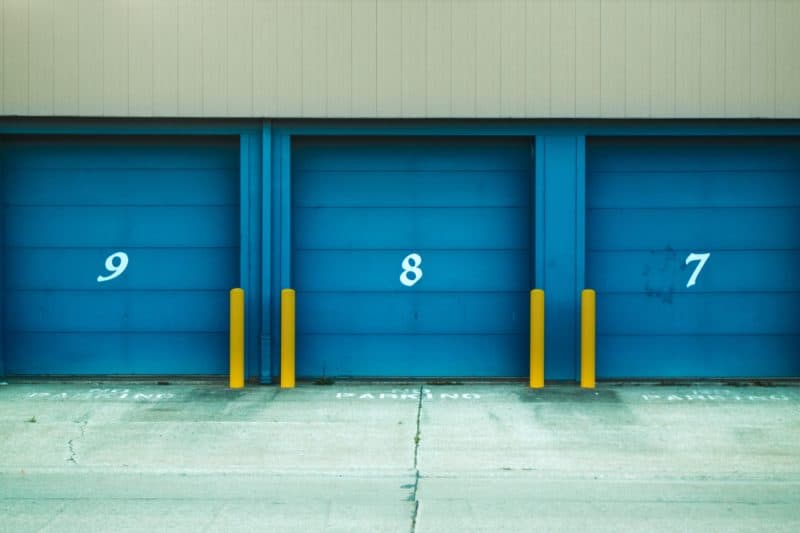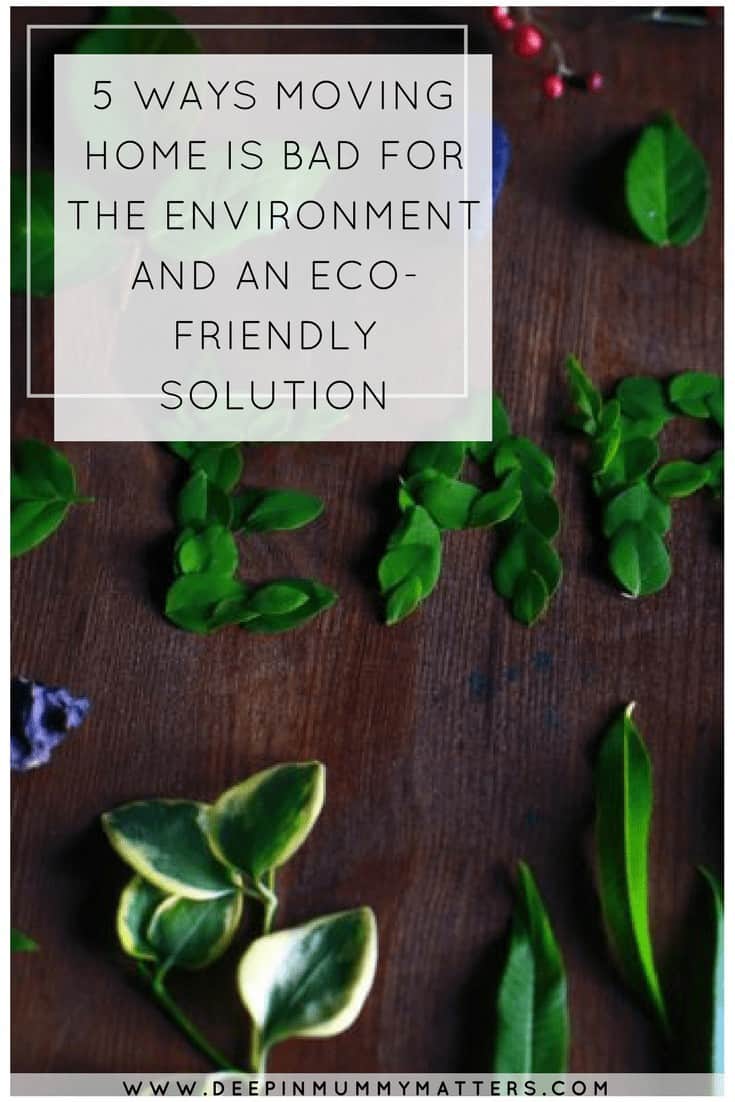It’s great that some of us are already doing our bit to be kinder to the environment. That might be recycling, or taking shorter showers, or turning off your lights when you leave a room. These may seem like small acts, but they add up and make a massive difference.
However, there’s one topic that we often forget about and that is…

The negative effects that moving to a new house have on the environment. Now, it’s not your fault you didn’t take this into account, because it’s often overlooked even by the professionals. But not for any longer. I am about to shed light on the negative environmental impacts of moving home.
But instead of moaning at you for what you might be doing wrong, this article is going to give you an eco-friendly solution that will keep being an eco-warrior like a boss and ensure that you can take the advice your mortgage advisors gave you and find a beautiful new home. So, why is moving not so great for the environment?
1. Moving can contribute to air pollution
Naturally, you are going to use a lot of transportation while moving.
Why can this be bad?
Because diesel, the fuel which moving trucks run on, pollutes the air by emitting greenhouse gases like carbon dioxide.
Even running errands related to moving can contribute to the emissions.
Eco Solution
- Keep your trips to a minimum
This doesn’t mean you have to cut your trips completely. Just try and run your errands all in one day instead of every day.
You’ll feel better about getting all the errands out of the way in one day anyway, so win-win.
If you have more than one car, but you can only use one car for the move, then having the other relocated with a firm like Cars Arrive Auto Relocation will help you keep the trips down too, as you won’t have to drive back and get the other car!
- Declutter before you move
If you have fewer items, this will be a lighter load, meaning less gas/ petrol needed and therefore fewer emissions released. Moreover, if you want to get done with the garbage removal on the same day and want to remove any rubbish from the premises. Thankfully there are Same Day Rubbish Clearance London services available.
Added bonus: Your move is likely to cost less because you’ll need less gas/petrol. Also, if you drastically declutter, you may end up needing a smaller van which will also make a move cheap. Result!
Hire an eco-friendly moving company that uses hybrid vans
Why? Because they run on electric power and emit far less C02 than diesel does.
- Hire an eco-friendly moving company that uses biodiesel
Why? It’s made from animal or vegetable fat making it renewable energy. Also, biodiesel gives more than a 90% Greenhouse carbon saving compared to regular fossil diesel
- Hire a moving company that neutralises their emissions
Sometimes the carbon emissions released are unavoidable. In that case, what you do about it is what counts. Buzzmove, a comparison website for removal companies, has a great eco-friendly initiative.
They’ve bought a grove for the removals industry to actively offset their carbon emissions through donating to plant a tree. This is great because sometimes, becoming an eco-company can seem daunting and difficult.
But with this, anyone can get involved.
It also incentivises the removal industry to offset their emissions, not just a one-off consistently.
2. The common packing materials used in moving are usually not eco-friendly

If only we could just throw all out belongings and furniture into suitcases and wheel them to our new homes!
Until a Mary Poppin-Esq suitcase is invented unfortunately moving = lots of cardboard boxes, bubble wrap, and Styrofoam packing materials.
Why can this be a problem?
All these materials tend to end up in landfills because, unless chemically treated, they don’t decompose.
Moreover, bubble wrap isn’t good for the environment because it’s not biodegradable. What it does do is release toxic chemicals when it breaks down. Not only is it bad for the environment, it’s bad for your health too.
Eco Solution
Recycled products should be a priority as they can be easily disposed of at a recycling point in your local town.
There are so many recyclable and renewable options such as:
- Recyclable boxes
So, someone else can use them after you.
- Us someone else’s old boxes so they get a good use out of them
Top tip: Cardboard boxes can be used up to 4 times.
- Recycled bubble wrap, plastic covers and containers
They can all be used again or recycled with your household recyclable products.
- Eco-friendly bubble wraps and air-popped popcorn
They are good substitutes for padding.
- Recycled papers
For wrapping fragile items.
- Rent plastic boxes
A great alternative to cardboard because they can be used up to 500 times and are much stronger than cardboard.
- Any biodegradable product
This supports biodiversity.
- Spill kit
Often in the chaos of moving, accidents can happen. Items get damaged, paint pots or chemicals get dropped so it’s worth investing in a spill kit that can quickly and safely help you to mop up any mess and prevent injury to family, wildlife or the environment.
3. Self-storage facilities can be detrimental to the environment

Many self-storage facilities are old fashioned and use up too much land.
The long-paved rows of self-storage garages are not environmental friendly.
Eco Solution
Opt for a storage warehouse with a green policy. Or that use up less land – as almost every UK/European storage place does!
You may be thinking: What can a storage company really do to drastically impact the environment?
Well, a lot actually.
Many green storages have rooftop solar panels – generating clean energy and substantially reducing carbon emissions.
Some green storages invest in a range of renewable sources like wind power.
A few eco storages even have heat pumps installed in the ground. This is because it converts the grounds constant temperatures into warm air used for receptions and offices in the building. How efficient is that!
Many storage companies have energy-efficient lights. Some even have motion-censored lighting which is really beneficial because it only comes on when you need it.
A few green storage centres even have roofs with grass lawns and budding plants on top. Not only does it look really cool from a birds-eye view, but it also provides additional insulation to the store’s upper floor. This keeps it cool during the summer months and reduces the need for energy intensive ventilation.
Some buildings are made from sustainable eco-materials such as wool, wood-fibre, straw bale, recycled sawdust, bark, stone, timber, frame, bamboo, corkwood, hardwood and stone.
Some collect rainwater from their roofs/rooves to use in drier months of the summer.
Some even use water efficient duel flush toilets and water-efficient low flow aerial spray heads.
Some try to minimize the impact on the local environment by planting trees and hedgerows.
Also, some provide cycling to work schemes. This not only encourage staff to cycle to work, but also makes it achievable because they subsidize the cost of buying a bicycle.
If this is what a storage company can offer, imagine what other bigger businesses can do!
Moving can contribute to landfill waste
Normally, just before you move, you get rid of many things you won’t need anymore.
This may include furniture, clothing, toys, kitchen utensils, appliances and electronics – to name a few!
But a lot of people throw these items away – which often ends up choking landfills.
Eco Solution
- Ask a neighbor if they want it
This means no carbon footprint
- Give away your unwanted goods to friends, family, colleges
Your junk could be their gold.
- Donate to your chosen charity
- Give electronics to e-waste recyclers
- Sell it online
- Cleaning products can be harmful on the environment
Leaving the old house and going to the new house can involve a lot of cleaning.
When we buy these cleaning products, we expect them to do one thing: clean.
But what we don’t realize is that although these products may leave your house germ free, many can have a lot of toxic and hazardous chemicals in them.
They may contribute to indoor air pollution, are poisonous if ingested, and can be harmful if inhaled or touched.
In fact, some cleaners are amongst the most toxic products found in the home.
Some cause acute, or immediate, hazards such as skin or respiratory irritation, watery eyes, or chemical burns, while others are associated with chronic, or long-term, effects such as cancer.
Some ingredients in chemical cleaners don’t break down when going down the drain. They then become harmless substances that threaten water quality or fish and other wildlife.
Another environmental concern with cleaning products is that many use chemicals that are petroleum-based.
This contributes to the depletion of this non-renewable resource and increasing dependence on imported oil.
Eco Solution
- Eco-friendly cleaning products
- Use simple ingredients that you already have at home
Vinegar, soap, water, baking soda, lemon juice and borax are great.
This is not only good for the environment and human health but is also an inexpensive cleaning method.
- Read the labels of the commercial cleaning products and look out for “Danger” or “Poison” on the label
- Go for plant-based ingredients over petroleum based
- Opt for biodegradable in 3-5 days


